What Is "Houseparty," the App People Are Obsessed With In Quarantine?
It's the opposite of social isolation...without leaving your couch.


Leave it to Generation Z, the most socially connected and tech-savvy group that ever lived, to figure out the art of self-isolating without being isolated: Houseparty, the app that's a little like Snapchat, a little like Skype, and already a beloved fixture on phones of Gen Z-ers in the States and millennials in Britain. Described as "the only thing that will keep me sane in the coming weeks" by British Vogue, Houseparty isn't technologically groundbreaking, but it lends itself well to low-key, organic, face-to-face chats. It's designed to be easy for you to start chatting to someone you'd never suggest a FaceTime with—as though you were making the rounds at a house party (get it?).
More so than classic video chat apps like Zoom, Houseparty is uniquely suited to the time we're in. It facilitates low-effort, face-to-face communication—the kind, researchers say, that is crucial to our mental health. It also strengthens your "weak ties," a.k.a. those people you know and engage with regularly but aren't part of your social circle, but that improve your well-being more than you realize. Which is all a long way of saying that you should video chat from isolation, and this app is well-designed for that.
The interface is a lot like Snapchat: bold, Comic Sans-esque writing and no single "home page." Instead, the home page is your face staring back at you. As with Snapchat, you pick a username, connect your contacts, and boom, you're off.
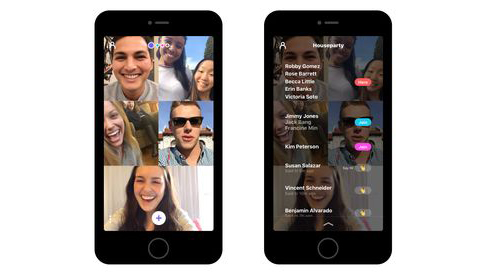
When you log into the app, your friends can see that you're "around" (if they're in the app), and are notified that you're "in the house" (if they're not)—it's deliberately casual language with the effect of making you feel like you're next door. When you're in the app and see that your friends are online, you tap a little hand-waving emoji to say hi, and a phone-call emoji to video call.
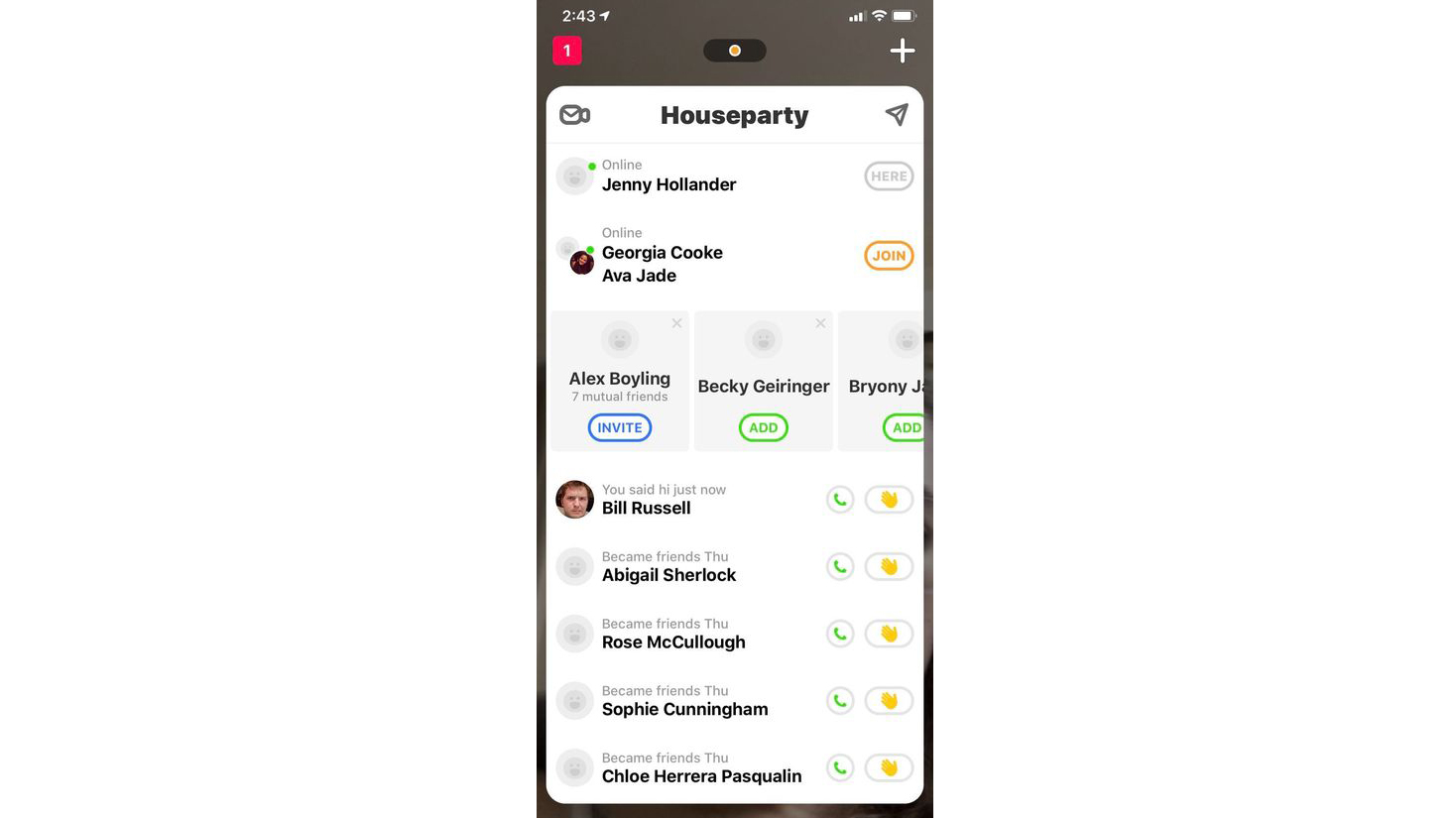
In many ways, Houseparty is similar to Snapchat, Skype, Zoom, FaceTime—group video calling apps that have filters, sound effects, etc. Where it differs is its gaming platform, which sets it apart from both video calling apps and in-game calling apps, and gives it an advantage by marrying the two concepts. If you're a gamer, you're probably familiar with Discord and Xbox Live, which are developed for socializing but are game-first (video calling can lag, for example, because the game screen is prioritized). Skype, Zoom, etc., by comparison, are video chat-first. Houseparty has no specific focus, which adds to the app's low-key feel.
Last year, it added Heads Up—you know, the family-friendly game that you've probably played both at Thanksgiving and with your friends after a few drinks. Unlike games like Fortnite, Heads Up doesn't require much in terms of data, and it's a good fit for Houseparty, because it doesn't overload the app so it freezes or lags. You can also play equally low-data, party-friendly games like trivia and Quick Draw!, a drawing game that's like a low-key Pictionary.
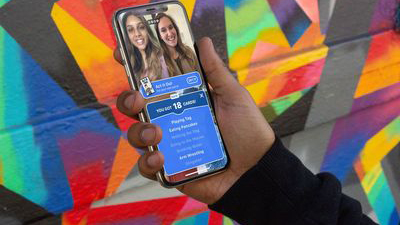
One fun (and potentially awkward) facet of Houseparty is that you can jump into any conversation your friend is having, even if the people they're talking to aren't people you know. Which means that you can see all the conversations your friends are having, and with whom. Spot your sister talking to your brother without you? Jump right in. (They don't have to approve you joining—they'll just have to deal when you pop up.) See your friend talking to her cousins? Jump in if you feel like it! It's weird. It's kind of fun, but it's weird!
Get exclusive access to fashion and beauty trends, hot-off-the-press celebrity news, and more.
#houseparty gave me one of the best moment (well, probably THE best moment) of this first week of quarantine. there’s nothing stronger than love❤️ pic.twitter.com/tgHvqAQgTfMarch 13, 2020
That's the catch: You can only have eight people in a single video chat. This is significantly down from Skype or Zoom, where you can have dozens of people at once (in Zoom's case, you can have 100 people in a call at one time, although only for 40 minutes). That said, you can have several "rooms" open at a time in Houseparty—the idea is that you can hop from one to the other, much like you might go to room to room at a party.
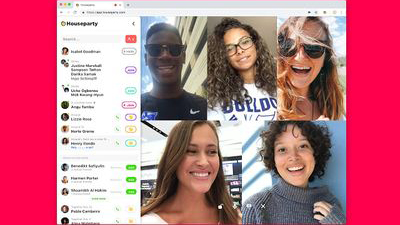
Forbes asked a tech expert to check for any obvious security flaws in the app, and good news—there isn't much to worry about there. "The app doesn’t provide a lot of in-app options and settings, which creates less scenarios for exploiting security issues," analyst Lukas Stefanko told the publication. That said, a legal scholar, Suzanne Vergnolle, dug through Houseparty's privacy policy and flagged her some serous concerns in a Twitter thread.
Concerns about the app are more about the openness of its settings—that you can see anyone your friend is talking to, anytime, and join in, without consent, at a moment's notice—and the potential implications of such a lack of privacy. That said, the lack of privacy isn't all that distinct from, say, Snapchat settings.
For more stories like this, including celebrity news, beauty and fashion advice, savvy political commentary, and fascinating features, sign up for the Marie Claire newsletter.
RELATED STORY

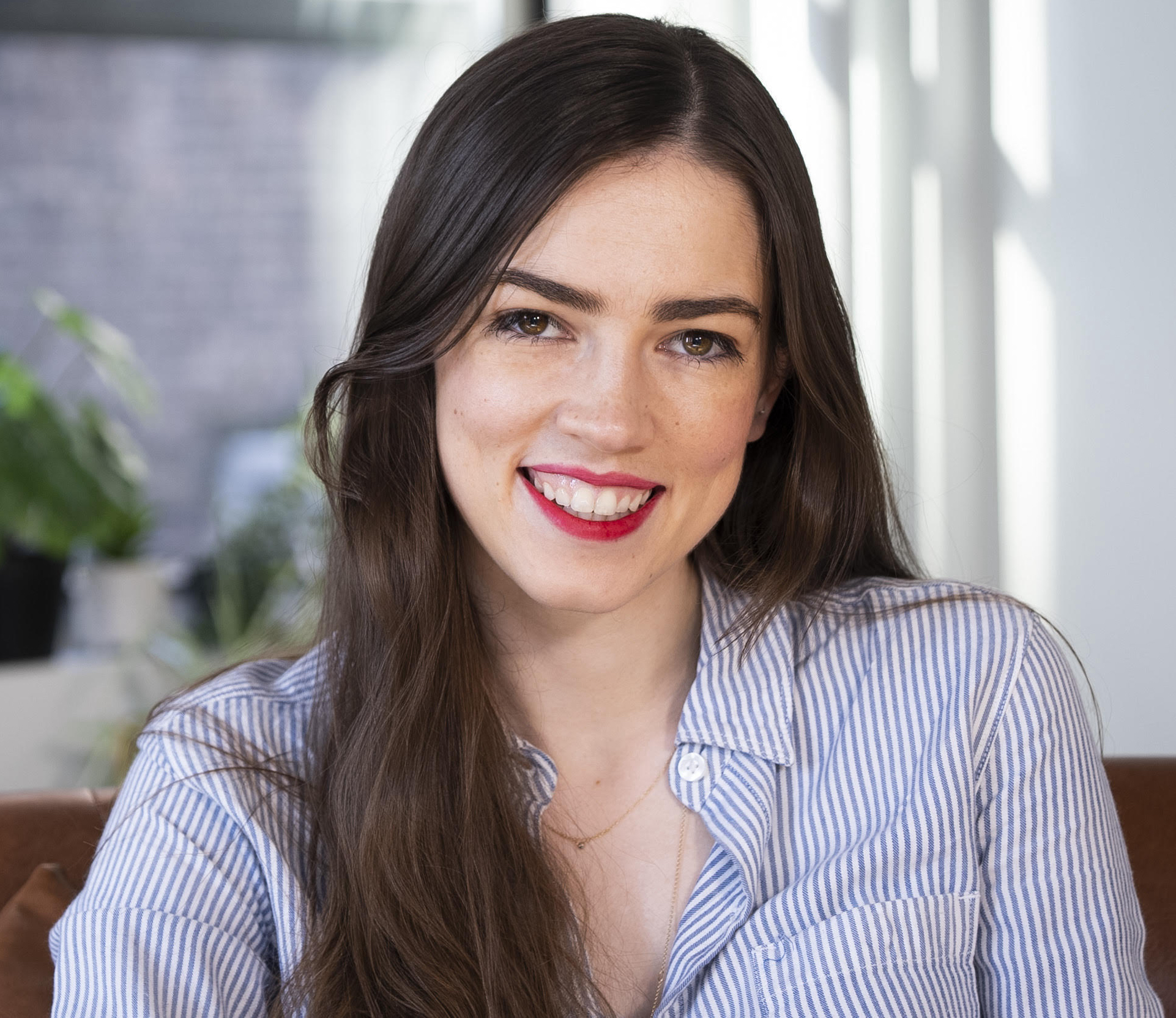
Jenny is the Digital Director at Marie Claire. A graduate of Leeds University, and a native of London, she moved to New York in 2012 to attend the Columbia University Graduate School of Journalism. She was the first intern at Bustle when it launched in 2013 and spent five years building out its news and politics department. In 2018 she joined Marie Claire, where she held the roles of Deputy Digital Editor and Director of Content Strategy before becoming Digital Director. Working closely with Marie Claire's exceptional editorial, audience, commercial, and e-commerce teams, Jenny oversees the brand's digital arm, with an emphasis on driving readership. When she isn't editing or knee-deep in Google Analytics, you can find Jenny writing about television, celebrities, her lifelong hate of umbrellas, or (most likely) her dog, Captain. In her spare time, she writes fiction: her first novel, the thriller EVERYONE WHO CAN FORGIVE ME IS DEAD, was published with Minotaur Books (UK) and Little, Brown (US) in February 2024 and became a USA Today bestseller. She has also written extensively about developmental coordination disorder, or dyspraxia, which she was diagnosed with when she was nine.